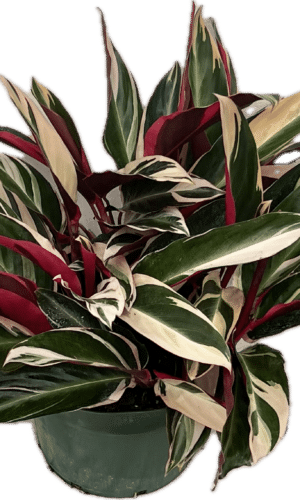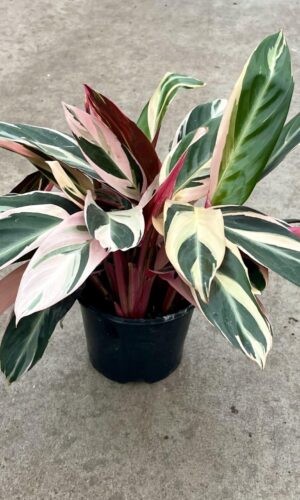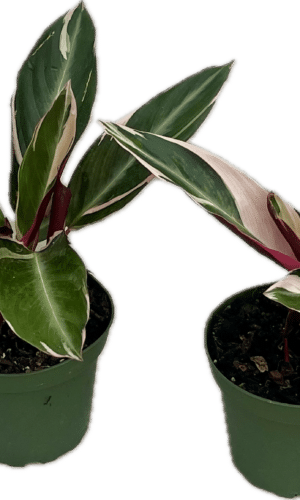Stromanthe sanguinea
Stromanthe sanguinea (sometimes referred to as Tricolor or Triostar Stromanthe), is a plant native to the rain forests of Brazil. This variety of the Stromanthe Plant has beautiful leaves in different shades of white, red, pink, and green. Since a Stromanthe Plant is a relative of the Prayer Plant and a member of the Maranta family, its leaves fold up at night as though praying. A Stromanthe Plant is a spectacular looking plant, but challenging to grow, definitely not for beginners.
Place a Stromanthe Plant in bright indirect light but no direct sun, a north or east facing window is best.
A Stromanthe Plant likes to be kept barely moist at all times. Be careful not to over-water a Stromanthe or the roots rot and the plant dies. In winter, allow the soil of a Stromanthe to dry out a little more, but never completely.
Avoid placing a Stromanthe in a cold or hot draft, otherwise basic household temperatures are fine.
A Stromanthe needs high humidity to keep its beautiful leaves looking good. If your house is dry, you need to place a Stromanthe on a wet pebble tray. Be sure the plant is sitting on the pebbles and not in the water. Stromanthe Plant leaves turn brown and become crisp when the air is too dry and the plant quickly disintegrates.
A Stromanthe sanquinea produces reddish-orange flowers in the Spring.
Aphids are a Plant Pest problem for a Stromanthe and, if the humidity is very low, spider mites move in.
Use a light, quick-draining soil for a Stromanthe Plant, that retains moisture but drains well. A peat based potting soil is a good choice for a Stromanthe.
Repot a Stromanthe in late spring or summer. Stromanthes do well in shallow containers. Be sure a Stromanthe has outgrown the existing pot before moving it to a larger one; this helps prevent over-watering and root rot.
Remove damaged or unattractive leaves from a Stromanthe where they are attach to the main stem.



